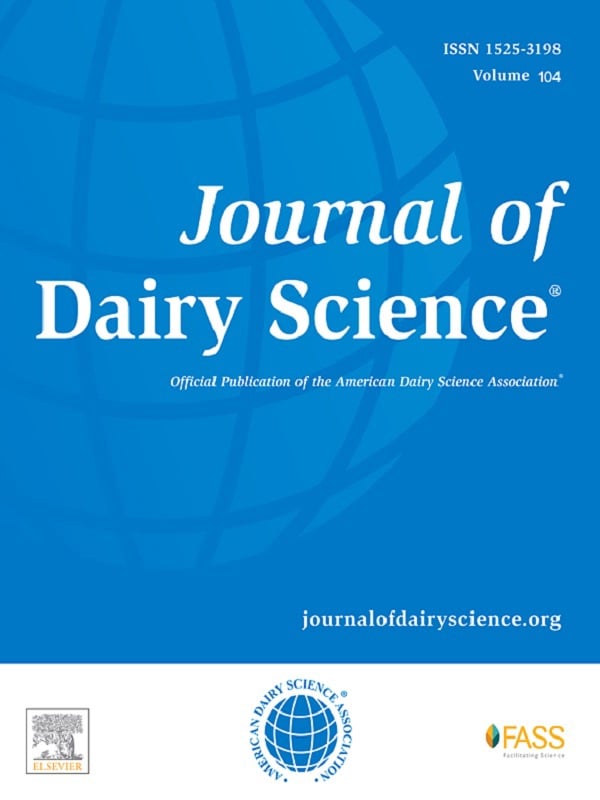Determining the nutritional boundaries for replacing lactose with glucose in milk replacers for calves fed twice daily
J. Dairy Sci. 103:7018–7027

Abstract
The effect of replacing lactose with glucose on the gastrointestinal system of young calves at levels above 20% diet inclusion in milk replacer (MR) is not well described. The aim of this study was to determine tolerance to glucose inclusion at the direct expense of lactose on glucose metabolism, health, and growth performance in Holstein male calves. In total, 110 Holstein male dairy calves (16 ± 2.5 d and 50.3 ± 0.2 kg) were acquired from a commercial collection center. After an adaptation period of 3 d, 100 calves were selected for the study based on health parameters. Calves were blocked based on body weight measured on d 4 after arrival. Within each block, calves were randomly assigned to 1 of 5 levels of glucose inclusion (replacing lactose): 0% (L1, n = 20), 10% (L2, n = 20), 20% (L3, n = 20), 30% (L4, n = 20), and 40% (L5, n = 20), leading to an estimated osmolality range from 417 (L1) to 586 mOsm/kg (L5). Carbohydrates were exchanged based on hexose equivalents, and glucose delivery was standardized across treatments, while the rest of the formula (60%) remained unchanged. Calves received L1 during the adaptation period of 3 d and were then exposed to their respective treatment until d 47 after arrival. Milk replacer was provided daily in 2 equally sized meals. Meal size was 2.0 L during the 3-d adaptation period and gradually increased to 4.0 L until weaning (d 35 after arrival). During weaning, meal size decreased from 4.0 to 2.0 L on d 36, and MR was withdrawn on d 48 after arrival. Straw and concentrates were offered ad libitum from d 25 onward. Calves had ad libitum access to water throughout the study. Measurements included daily feed intakes, weekly body weight, and weekly spot feces sampling in all calves. Blood samples were collected on d 18. Additionally, postprandial responses of insulin and glucose were measured in 6 calves per treatment on d 19, 20, and 21. Increasing glucose inclusion (at the direct expense of lactose) in MR did not affect growth but linearly increased mortality, which was as high as 25% (5/20) in L5. Mortality was primarily associated with gastrointestinal disorders (6/11). At higher glucose levels, calves needed greater serum insulin concentrations to control glycemia, as shown by a linear increase in the area under the curve for insulin. Furthermore, calves needed more time to control glycemia, as indicated by a linear increase in the maximal concentration of insulin. Consequently, there was a linear increase in area under the curve for glucose. Even though calves needed more time and higher insulin concentrations for 30% glucose inclusion and higher, the glucose-to-insulin ratio did not differ across treatments. However, high glucose inclusion levels in MR affected calf mortality and is not a suitable strategy for lactose replacement.